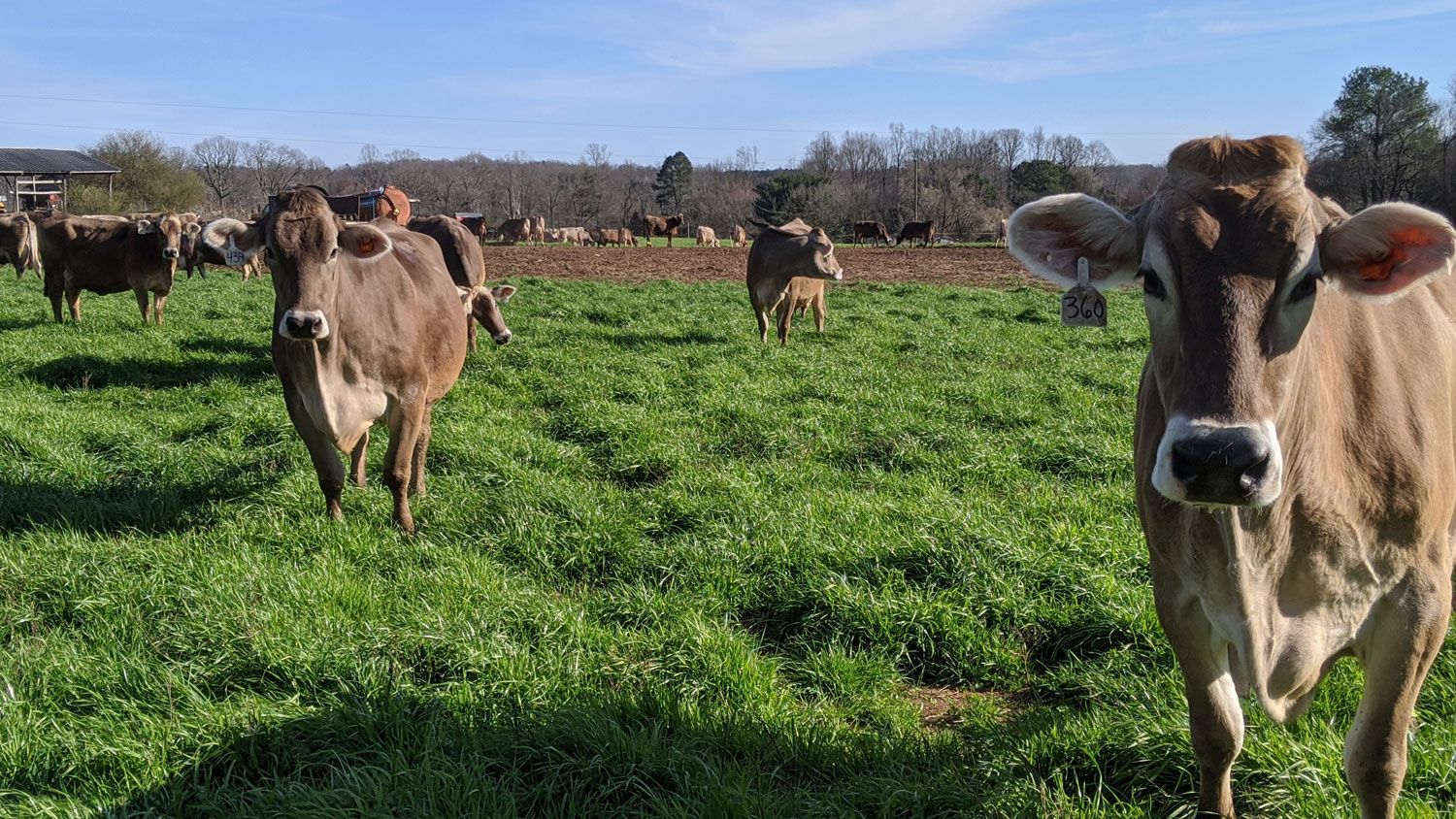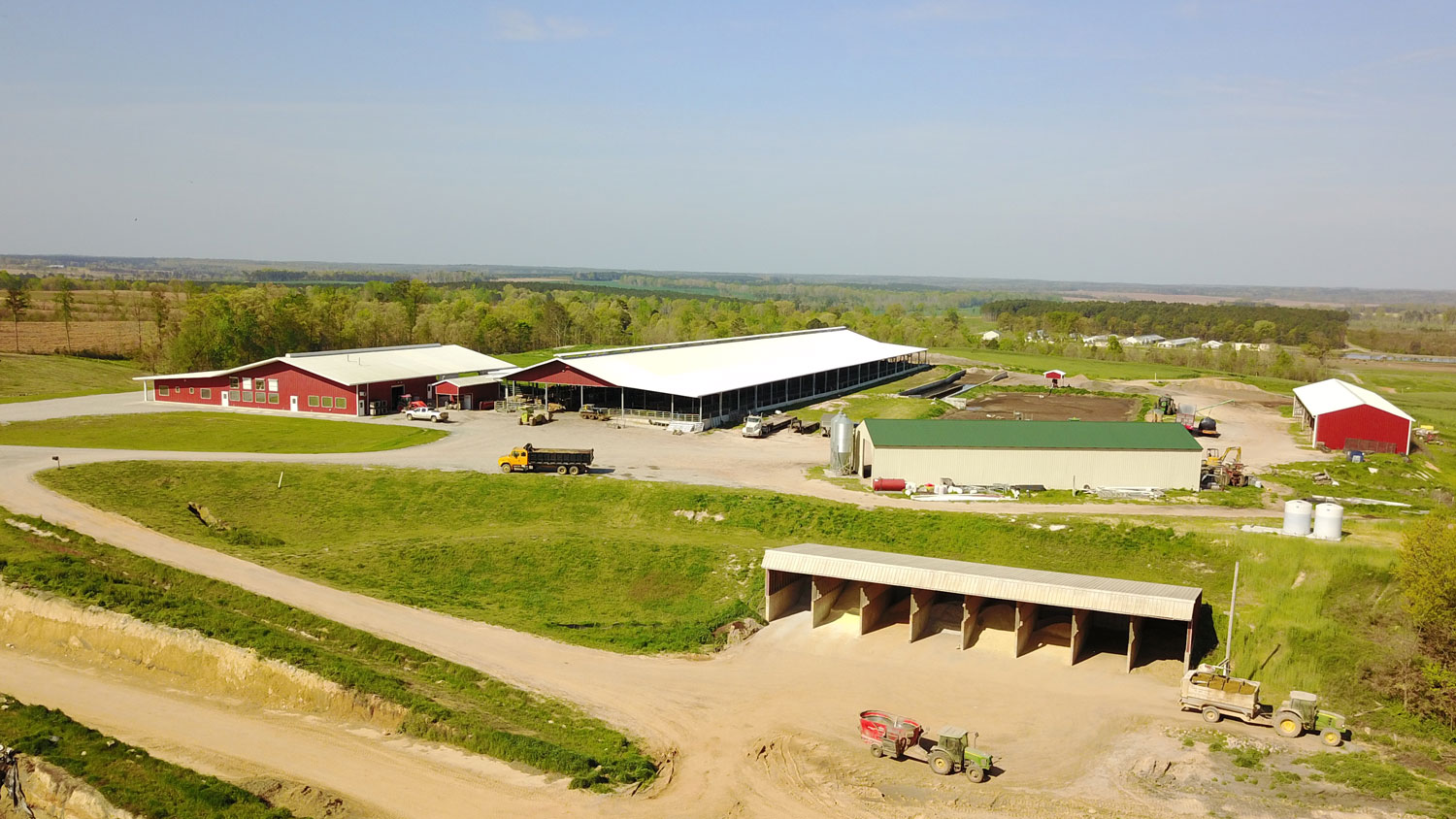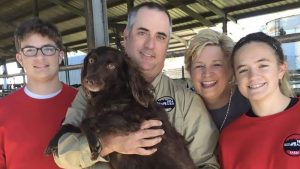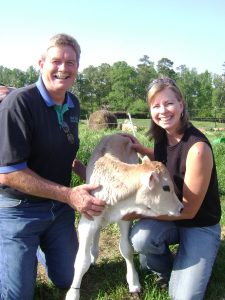NC Dairy Industry: A Glass That’s More Than Half-Full

The landscape of the dairy industry has seen changes over the years — milk prices and fewer farms, to name a few — but it’s always been a valuable commodity to North Carolina’s agriculture. Although the state ranks 28th in the country for milk production, dairy contributes about $10.6 billion to North Carolina’s economy, including related jobs and items produced, processed, and sold.
By the Numbers
The U.S. Department of Agriculture’s National Agricultural Statistics Services (USDA-NASS) started collecting data on the national dairy cow inventory in 1867 and milk production in 1924. Based on that data, milk cow inventory in North Carolina hit a record high in 1945 with 400,000 cows. As of 2019, that number has dropped to 44,000 — a record low for inventory.
The state hit a record high in milk production in 1985. That number dropped over the next 20 years but seemed to have leveled, and we consistently produce about 1 billion pounds of milk a year.

“In 2019, the average dairy cow in North Carolina produced 21,476 pounds of milk, which equates to about 2,500 gallons. In the mid-1900s, each dairy cow produced about 5,000 pounds. To supply the market demand for milk, cheese, butter, ice cream, yogurt and other tasty dairy foods, we really don’t need as many cows as we did 50 years ago,” said Brittany Whitmire, Extension dairy associate at NC State.
Fewer Farms, Greater Dedication
In 2013, North Carolina had about 250 Grade A commercial dairy operations that shipped fluid milk through cooperatives. Today there are about 140.

Reid Smith, the owner of Red Acres Farm in Davidson County and president of the North Carolina Dairy Producers Association, believes this might have something to do with how people consume dairy these days.
“Consumers are wanting to eat their dairy versus drinking it. They want more cheese on their pizza or more protein-fortified bars. That’s where it started. The dairy market began building plants for those types of dairy products,” Smith explained. While most milk produced goes toward manufacturing powders, cheeses and other dry dairy products, 12% remains as fluid milk for drinking.
Smith said that the Southeast remains a fluid milk market, including many dairy farms in North Carolina, like family-owned and operated Brush Creek Swiss Farms in Chatham County.
Norman Jordan Jr., a third-generation dairy farmer, and his wife, Karen, run Brush Creek Swiss Farms — a 100% registered Brown Swiss herd. The family started the operation in the early-to-mid 1920s. Growing up in the industry, Norman remembers when there were 1,200 to 1,500 dairy farms in North Carolina.
I enjoy the animals. I enjoy the work. … I enjoy the challenge.

“What has happened in North Carolina is pretty much what you’ve seen across the country where you’ve had dairy operations decide, for whatever reason, to exit the business. The ones that remain simply continue to expand their operations and get a little bit larger over time.” Norman has kept his farm about the same size. He says it allows him and his wife individual involvement with the animals.
The Jordans – both earned their bachelor’s degrees in animal science from the College of Agriculture and Life Sciences – enjoy their work and lifestyle.
“The reason I do it is partially because I grew up in it. Had I not been exposed to it, I might not have been attracted to it,” Norman said. “I enjoy the animals. I enjoy the work. I enjoy the environment that I work in. I enjoy the challenge. Sometimes I wish it wasn’t quite as challenging, but I enjoy the challenge.”
Karen said she fell in love with the industry at NC State.
“That first year in the introductory classes, they take you out to the dairy farms. That was it. I fell in love with the whole concept of dairy and being able to work with animals all the time,” Karen said. She also earned her doctorate in veterinary medicine at NC State.
Like the Jordans, Drew Gibson enjoys the work of being a dairy farmer.
“I’ve always loved being around cattle, whether it be beef or dairy,” Gibson said. “After going to NC State and getting a job as a student on the research farm, I saw the different aspects of what it takes to be a dairy farmer. There’s many things we have to do on a daily basis — putting in water lines, planting corn, working on equipment and being hands-on with the cows — and I think that’s what pushed me towards dairy farming,” Gibson said. “You’re doing something different every day and trying to keep everything moving forward.”

Like Norman Jordan, Gibson grew up on a farm and was introduced to dairy farming early. He’s currently the farm manager at White Rock Farms in Peachland, North Carolina. He graduated from NC State in 2009 with animal science and agricultural business management degrees.
That’s where Gibson met his fianceé, Dakota Sparks. The two met while working at NC State’s Dairy Education Unit. Sparks graduated from NC State in 2010 and now serves as the heifer manager at White Rock Farms.
I knew it was a hard industry to get into, a hard life to live.
“I’ve always been in agriculture and always wanted to stay in agriculture,” Sparks said. “I was really interested in genetics and beef cattle, but I quickly realized there have been a lot more advances in genetics in the dairy industry.”
Sparks wasn’t sure if dairy was right for her but realized she had a true knack for caring for animals.
“Dealing with calves is a delicate process, and I just naturally got in there and started learning and realized I’m really good at this.” Sparks said she greatly respects all dairy farmers as it’s a tough industry and lifestyle.
“I knew it was a hard industry to get into, a hard life to live, but I have always liked it,” Sparks added.
The Jordans and Smith share that sentiment. It’s hard work, Monday through Sunday, but it’s meaningful work, too.
“One thing I take pride in is that we (dairy farmers) feed families. The milk we produce feeds families, which then helps us feed our own families,” Smith said.
Resiliency: COVID-19 and Beyond
According to Smith and Whitmire, 2017 and 2018 were tough years with milk prices, but 2020 was shaping up to be a turnaround year for dairy farmers.
“We had gone through a period of time where we had some relatively low prices in 2017 and ’18. And 2019 was trending up, and it looked like we were going to have a good year here in 2020. But that’s the cycle dairy can follow — low prices followed by a cycle of mediocre prices and then a cycle of good prices, and it repeats,” Smith explained. And good prices typically occur when the national economy is doing well, and consumers are going out and eating at restaurants.
But then COVID-19 happened. Schools closed, restaurants closed and stay-at-home orders were issued.
“Specifically in North Carolina, it was kind of like a car accident. When things started shutting down and the economy started changing its direction, people treated the situation like a snowstorm. They started buying a lot of fluid milk, and it was flying off shelves. Processing plants were running at capacity trying to bottle as much milk as possible,” Smith said.
By day 10 or 12, Smith said people stopped buying milk, and the pipeline became saturated.
“The supply chain just zigzagged so quickly, and that’s when you saw milk being dumped. Some milk was dumped in North Carolina, but not a lot because milk is not dumped in the South as much as other areas.”
Because many of the dairy farms are part of a cooperative, they share in each other’s burdens, but they also benefit from one another.
We just adapt to change and overcome the hurdles.
Karen recalled one larger operation in North Carolina being asked to dump milk. “A big farm is going to have the capacity to dump, like in their manure pond and then spreading that over their land as fertilizer,” she added. “With a cooperative, they’re not going to take the whole burden. We share in the problems, but we also share in the profits.”
Gibson says everyone has been affected by COVID-19. “With schools being out and restaurants being closed, obviously there was a sharp decline in demand for dairy products, so that’s affected the price of milk we get paid,” Gibson said. “We just adapt to change and overcome the hurdles. We cut back where we can, buckle down and tighten our belts and move forward.”
Gibson is optimistic that if dairy farmers continue to do what they do, be smart and work hard, things will turn around. “That’s kind of my motto — keep doing the right thing, and everything will come together.”
And it goes beyond the COVID-19 hurdle. Gibson says dairy farmers, in today’s market, really have to be efficient and think outside the box. They have to find innovative ways to keep the business going.
“We are very technologically based. You can’t manage a farm if you don’t know how well you are doing. Technology allows us to be efficient enough to stay in the industry and succeed,” Gibson said.
It’s something the Jordans have also realized. Brush Creek Swiss Farms uses CowManager, software that monitors each individual cow’s health, relaying critical data directly to smartphones.

“The amount of data we collect on our animals is enormous. It’s been a challenge to work through that information in order to be beneficial not only to the success of our operation financially and its survivability but also be beneficial to the animals. It gives us an opportunity to see how the cows respond to the work, the new technologies and skills we adopt and put into practice.” said Norman. “Our entire effort is to give our cows the best environment, the best care, to keep them comfortable and happy so they can perform to their maximum genetic potential and live good lives while on our farming operation.”
Karen adds that if they were still farming like they were when they graduated from NC State, they wouldn’t be a viable business.
“We use the university system all the time, especially through NC State Extension, taking research that’s been done and seeing how we can apply it and bring it to the farm. This industry is an industry where you have to be reading all the time and learning how you can incorporate a new feed additive or a new data management system.”
Educating Consumers
As Smith said, he takes great pride in knowing that dairy farmers like himself, the Jordans, Gibson and Sparks, are feeding families. It’s at the core of why they do what they do. And they want consumers to know that milk and dairy products can actually be nutritious snacks. An 8-ounce glass of 2% milk is only 122 calories and contains 8 grams of protein. Six ounces of plain low-fat yogurt is just over 100 calories with 9 grams of protein — and believe it or not, that small scoop, about half of a cup, of vanilla ice cream has 2.4 grams of protein.
We care for our animals. We love what we do.
In addition to wanting people to know the nutritional value of dairy products, dairy farmers also want folks to realize that they truly care about their animals’ welfare.
“We care for our animals. We love what we do. It’s a relationship between us and our animals. If we take better care of them, they take better care of us,” Smith said. “We’re also part of the environment. We want to leave our farms better than the way we found it. We want to be progressive because we do care about the environment, and we do incorporate environmental practices that are good for the soils, water and air.”
- Categories:


